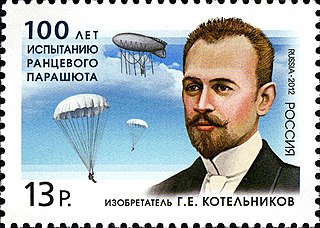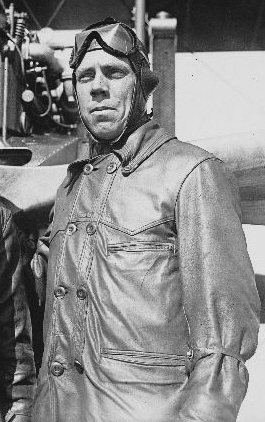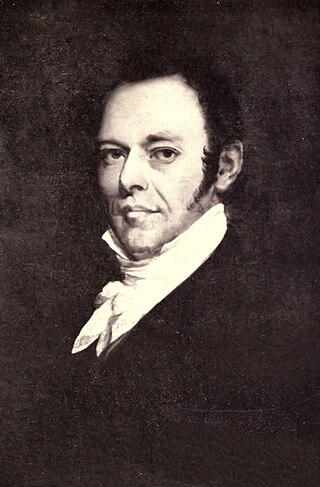Related Research Articles

An invention is a unique or novel device, method, composition, idea or process. An invention may be an improvement upon a machine, product, or process for increasing efficiency or lowering cost. It may also be an entirely new concept. If an idea is unique enough either as a stand-alone invention or as a significant improvement over the work of others, it can be patented. A patent, if granted, gives the inventor a proprietary interest in the patent over a specific period of time, which can be licensed for financial gain.

A parachute is a device used to slow the motion of an object through an atmosphere by creating drag or, in a ram-air parachute, aerodynamic lift. A major application is to support people, for recreation or as a safety device for aviators, who can exit from an aircraft at height and descend safely to earth.

Nils Gustaf Dalén was a Swedish Nobel laureate and industrialist, engineer, inventor and long-term CEO of the AGA company and inventor of the AGA cooker and the Dalén light. In 1912 he was awarded the Nobel Prize in Physics for his "invention of automatic regulators for use in conjunction with gas accumulators for illuminating lighthouses and buoys".

Paris is a home rule-class city in Bourbon County, Kentucky, and the county seat. It lies 18 miles (29 km) northeast of Lexington on the Stoner Fork of the Licking River. It is part of the Lexington–Fayette Metropolitan Statistical Area. As of 2020, it had a population of 10,171.

Garrett Augustus Morgan Sr. was an American inventor, businessman, and community leader. His most notable inventions were a type of two-way traffic light, and a protective 'smoke hood' notably used in a 1916 tunnel construction disaster rescue. Morgan also discovered and developed a chemical hair-processing and straightening solution. He created a successful company called "G. A. Morgan Hair Refining Company" based on his hair product inventions along with a complete line of haircare products and became involved in the civic and political advancement of African Americans, especially in and around Cleveland, Ohio.

Nathan Beverly Stubblefield was an American inventor best known for his wireless telephone work. Self-described as a "practical farmer, fruit grower and electrician", he received widespread attention in early 1902 when he gave a series of public demonstrations of a battery-operated wireless telephone, which could be transported to different locations and used on mobile platforms such as boats. While this initial design employed conduction, in 1908 he received a U.S. patent for a wireless telephone system that used magnetic induction. However, he was ultimately unsuccessful in commercializing his inventions. He later went into seclusion, and died alone in 1928.

Gleb Yevgenyevich Kotelnikov, was the Russian-Soviet inventor of the knapsack parachute, and braking parachute.

Lexington Cemetery is a private, non-profit 170-acre (69 ha) rural cemetery and arboretum located at 833 W. Main Street, Lexington, Kentucky.

Walter Hunt was an American mechanical engineer. Through the course of his work he became known for being a prolific inventor. He first became involved with mechanical innovations in a linseed producing community in New York state that had flax mills. While in New York City to promote his inventions he got involved in inventing the streetcar gong that was used throughout the United States. This then led him to invent other useful items like the safety pin and sewing machine. He invented the precursor to the repeating rifle and fountain pen. About two dozen of his inventions are used today in basically the same form as he had patented them. In spite of his many useful innovative creations he never became wealthy since he sold off most of his patent rights to others at low prices with no future royalties. Others made millions of dollars from his safety pin device.

Leslie Leroy Irvin was a stunt-man for the fledgling Californian film industry. Flying in balloons, he performed using trapeze acrobatics and parachute descents. For the 1914 film Sky High, Irvin made his first jump out of an airplane while flying at 1,000 feet above the ground. In 1918, he developed his own life-saving static line parachute, jumping with it several times and promoting it to the US Army. Irvin joined the Army Air Service's parachute research team at McCook Field near Dayton, Ohio where he made the first premeditated free-fall jump with the modern parachute on April 28, 1919.
Van Meter, VanMeter, Van Metre, Van Mater and Van Matre are American surnames derived from the Dutch surname Van Meteren. Most are descendants of Jan Joosten van Meteren (1626–1704) who in 1662 settled in Wiltwijck, New Netherlands, now Kingston, New York. The surname is a toponym, meaning "from Meteren" in Gelderland, the Netherlands.

James Floyd Smith was an inventor, aviation pioneer, and parachute manufacturer. With borrowed money, he built, then taught himself to fly his own airplane.

Charles Adler Jr. was an American inventor and engineer. He is most known for developing devices meant to improve transportation safety, including sonically actuated traffic lights, colorblind road signals, pedestrian push-buttons, and flashing aircraft lights.

Charles E. Roberts was an American engineer, inventor and an important early client and patron of Frank Lloyd Wright. In 1896, Wright remodeled Robert's house in Oak Park.

Abraham Lincoln's patent relates to an invention to buoy and lift boats over shoals and obstructions in a river. Abraham Lincoln conceived the invention when on two occasions the boat on which he traveled got hung up on obstructions. Lincoln's device was composed of large bellows attached to the sides of a boat that were expandable due to air chambers. Filed on March 10, 1849, Lincoln's patent was issued as Patent No. 6,469 later that year, on May 22. His successful patent application led to his drafting and delivering two lectures on the subject of patents while he was president.
CharlesBroadwick was an American pioneering parachutist and inventor. An executive director of the U.S. Parachute Association, Ed Scott, said "just about all modern parachute systems" use ideas Broadwick developed: "an integrated, form-fitting harness and container system nestled on the back." Broadwick developed the static line, a line from a parachute to an aircraft that pulls the parachute from its pouch. Static lines are still used by paratroopers and novice skydivers. U.S. Army Warrant Officer Jeremiah Jones commented, "[Broadwick] is like the grandfather of paratroopers." Broadwick demonstrated parachute jumps at fairs and taught and equipped famous female parachutist Tiny Broadwick.
Thomas Lewis was an American Revolutionary War veteran who figured prominently in the early development of Lexington, Kentucky and the Commonwealth of Kentucky. He administered the oath of office to Kentucky's first governor, Isaac Shelby, in 1792.

Benjamin Winslow Dudley (1785–1870) was an American surgeon and academic in Kentucky, United States. Trained at the University of Pennsylvania, in London, and in Paris, he performed hundreds of lithotomy, trephinations and treated aneurysms. In his lectures and writing, he stressed the importance of preparation and cleanliness. He served as a professor of medicine at Transylvania University from 1817 to 1850, where he taught many future physicians who treated members of the Confederate States Army.

Amanda Matthews is an American sculptor and painter from Louisville, Kentucky, United States, who lives in Lexington, Kentucky.
Laurance Browning VanMeter is an American lawyer who has served as the chief justice of the Kentucky Supreme Court since 2023, he was elected to the court in 2016.
References
- ↑ "Aviatory Life-Buoy" (PDF). United States Patent Office . Retrieved August 11, 2010.
- 1 2 LeMay, Jason; Trowbridge, John M.; Canon, Harold (September 2006). "Kentucky's Flying Soldiers: A History of the Kentucky Army National Guard's Fixed Wing Aviation" (PDF). pp. 14–15. Archived from the original (PDF) on June 19, 2010. Retrieved August 11, 2010.
- 1 2 Van Meter, Laurence B. (2004). "Descendants of Isaac VanMeter & Rebecca Cunningham" (PDF). Lexington, Kentucky. pp. 55–61. Retrieved August 11, 2010.
- ↑ Kentucky Aviation Pioneers: Solomon Lee Van Meter Jr. (1888-1937), KET Aviation Museum Of Kentucky
- ↑ "Aviation Museum to unveil bronze sculpture of aviation pioneer Van Meter". KyForward.com. Retrieved 2016-10-26.